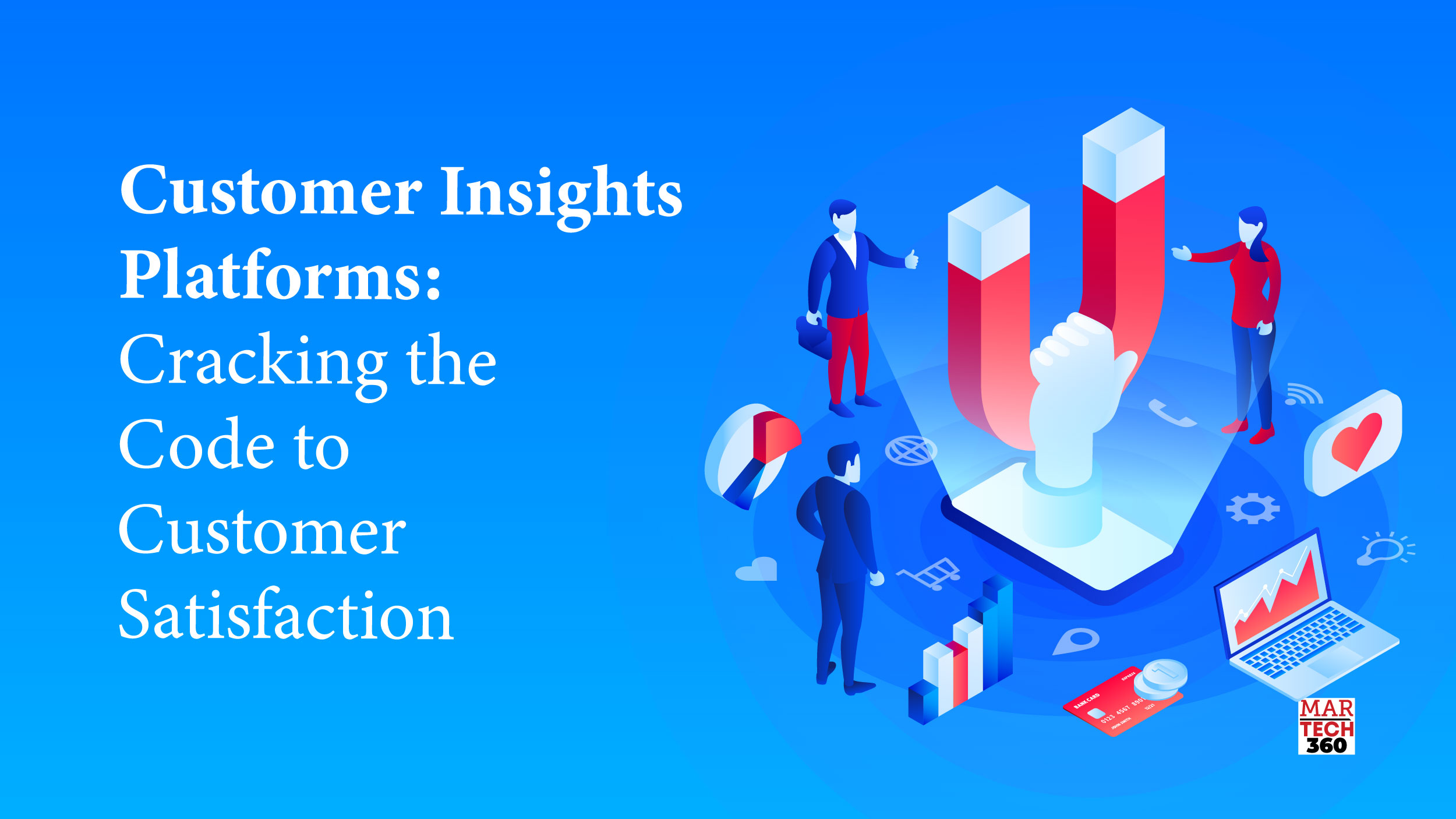In the dynamic landscape of business, understanding customer behavior is a pivotal factor that can make or break a company’s success. This is where a Customer Insights Platform (CIP) comes into play. As we delve into the realm of customer insights platform, we’ll explore their definition and the indispensable role they play in today’s competitive market.
Features of a Customer Insights Platform

1. Data Collection and Analysis
One of the core functionalities of a CIP is its ability to collect and analyze vast amounts of data. This goes beyond simple demographics; it delves into customer preferences, purchase history, and interactions with the brand. This comprehensive data forms the foundation for actionable insights.
2. Customer Segmentation
Segmentation allows businesses to categorize their customer base based on various factors. This enables targeted marketing strategies, personalized communication, and tailored product offerings, ultimately enhancing customer satisfaction and loyalty.
3. Real-time Feedback
A responsive CIP provides real-time feedback mechanisms. This immediate insight into customer sentiments allows businesses to address issues promptly, capitalize on positive experiences, and adapt their strategies on the fly.
Benefits for Businesses
1. Improved Decision Making
Armed with accurate and timely insights, businesses can make informed decisions. From product development to marketing strategies, a CIP ensures that every move is backed by data, increasing the likelihood of success.
2. Enhanced Customer Engagement
Understanding customer behavior fosters meaningful engagement. Businesses can create personalized experiences, anticipate needs, and build lasting relationships, leading to increased customer loyalty.
3. Personalized Marketing Strategies
Gone are the days of generic marketing. A CIP empowers businesses to tailor their marketing efforts to individual preferences, ensuring that messages resonate with the target audience.
How Customer Insights Platforms Work
1. Data Integration
Integrating data from various sources is a fundamental aspect of CIP functionality. This may include data from online and offline sources, social media, and customer interactions, providing a holistic view of customer behavior.
2. Predictive Analytics
CIPs often leverage predictive analytics to forecast future trends and customer behavior. This proactive approach enables businesses to stay ahead of the curve and anticipate market shifts.
3. User-Friendly Dashboards
To make sense of the complex data generated, CIPs offer user-friendly dashboards. These visual representations simplify the interpretation of insights, making them accessible to stakeholders across the organization.
Choosing the Right Customer Insights Platform
1. Scalability
A good CIP should be scalable to accommodate the growing needs of a business. Whether a startup or an established enterprise, the platform should evolve with the business.
2. Integration with Existing Systems
Compatibility with existing systems is crucial for seamless implementation. A CIP that integrates effortlessly with other tools and platforms ensures a cohesive and efficient data ecosystem.
3. Cost-Effectiveness
While the benefits are significant, businesses need to assess the cost-effectiveness of a CIP. The value it brings should justify the investment, making it a strategic asset rather than a financial burden.
Challenges
1. Data Security Concerns
The vast amount of sensitive customer data handled by CIPs raises concerns about data security. Implementing robust security measures is imperative to build trust and comply with regulations.
2. Training and Adoption
Introducing a CIP requires training for the team. Overcoming resistance to change and ensuring that the team adopts the platform seamlessly are common challenges that businesses face.
3. Overcoming Resistance
Employees accustomed to traditional methods may resist the adoption of a CIP. Clear communication, training programs, and showcasing the benefits help in overcoming this resistance.
Future Trends
1. Artificial Intelligence and Machine Learning Integration
The future of CIPs lies in the integration of artificial intelligence and machine learning. These technologies will enhance predictive capabilities and provide even deeper insights into customer behavior.
2. Increased Focus on Privacy
As data privacy becomes a growing concern, CIPs will need to prioritize and enhance their privacy features. This includes transparent data usage policies and compliance with evolving privacy regulations.
3. Continuous Evolution of Features
To stay relevant, CIPs must continuously evolve. This involves staying ahead of technological advancements, updating features to meet changing business needs, and ensuring compatibility with emerging trends.
Case Study: Transforming Business Strategy with Customer Insights
In the fast-paced business world, the customer’s insights have become an essential data for any company’s success. A company has recognized the importance of the customer’s insights and decided to integrate a Customer Insights Platform. To be able to understand the customer’s preferences and different behaviors to adapt to them. This helped to overcome many challenges in the market and enhanced the customer’s engagement significantly. Operating in the retail sector, this company found that the traditional marketing strategies no longer provide valuable insights. So the Customer Insights Platform emerged as the ideal solution, with the detailed insights that it provided.
Solution
The company implemented a Customer Insights Platform, AIM Insights, which offers a wide range of data and insights. Collecting the customer’s feedback, real-time insights, and predictive analytics.
- Data Collection and Analysis
The tool was able to collect and analyze a vast amount of data and insights from different sources. Including the customer’s online purchases, in-store shopping, and the social media feedback. The platform enabled the company to go beyond the normal data, providing detailed insights about the customers preferences, motivations, and buying habites. Leading to a clear understanding of the customer’s needs, and their journey with the brand.
- Customer Segmentation
The tool’s ability for detailed segmentation for the customers was valuable. As it helped in dividing the customers based on many different characteristics, and grouping them. By understanding the different customer segments, the company was able to tailor their messages and marketing strategies to different groups. Enhancing the effectiveness of the marketing campaigns and helping in creating more targeted products for the different segments.
- Real-Time Feedback
Another significant feature was providing real-time data and feedback for the customers. To know how the customers feel towards the company’s new products and what needs to be changed. Leading to identifying the areas of improvement that the company should work on and enhance. Also, solving the problems that the customers are facing and enhancing customer satisfaction. Leading to build a strong relationship between the customers and the brand.
Results
The adoption of the customer insights platform led to significant improvements in different factors.
- Improved Decision Making
With accurate real-time insights about the customers, they were able to make better decisions. The information from the customer’s insights led to improvements and development in the products. By working on the customers’ needs and expectations from the brand, to provide the right services and products for them.
- Enhanced Customer Engagement
Through understanding the customer’s behaviours, the company was able to align with the customer’s interests and provide customized content. By tailoring the messages, the company builds strong emotional connections with its customers. Through personalized campaigns, customized offers, and targeted content. Which leads to engaging the customers and increase their loyalty and satisfiction.
- Personalized Marketing Strategies
By depending on the customer’s insights and segmentation. The brand was able to generate more personalized marketing campaigns and strategies. To ensure the customer is receiving the message in the right format that aligns with their interests.
Conclusion
In the fast-paced world of business, the ability to harness customer insights is a game-changer. Customer Insights Platforms serve as the bridge between raw data and actionable strategies, propelling businesses toward success. As we conclude this exploration, it’s evident that embracing a CIP is not just a choice but a strategic imperative for any business aiming to thrive in the digital age. Request a Demo from AIM Technologies now!
FAQs
How does a Customer Insights Platform enhance customer engagement?
- Customer Insights Platforms enable personalized experiences, anticipating customer needs and fostering meaningful engagement.
What challenges do businesses face in implementing Customer Insights Platforms?
- Challenges include data security concerns, training and adoption issues, and overcoming resistance to change.
Why is predictive analytics crucial in Customer Insights Platforms?
- Predictive analytics helps businesses forecast future trends and customer behavior, allowing proactive decision-making.
How do Customer Insights Platforms contribute to revenue and growth?
- Success stories highlight the positive impacts on revenue and sustainable, long-term growth for businesses utilizing CIPs.
What is the future of Customer Insights Platforms?
- The future involves AI and machine learning integration, increased focus on privacy, and continuous evolution to stay ahead of trends.





you are in reality a good webmaster The website loading velocity is amazing It sort of feels that youre doing any distinctive trick Also The contents are masterwork you have done a fantastic job in this topic